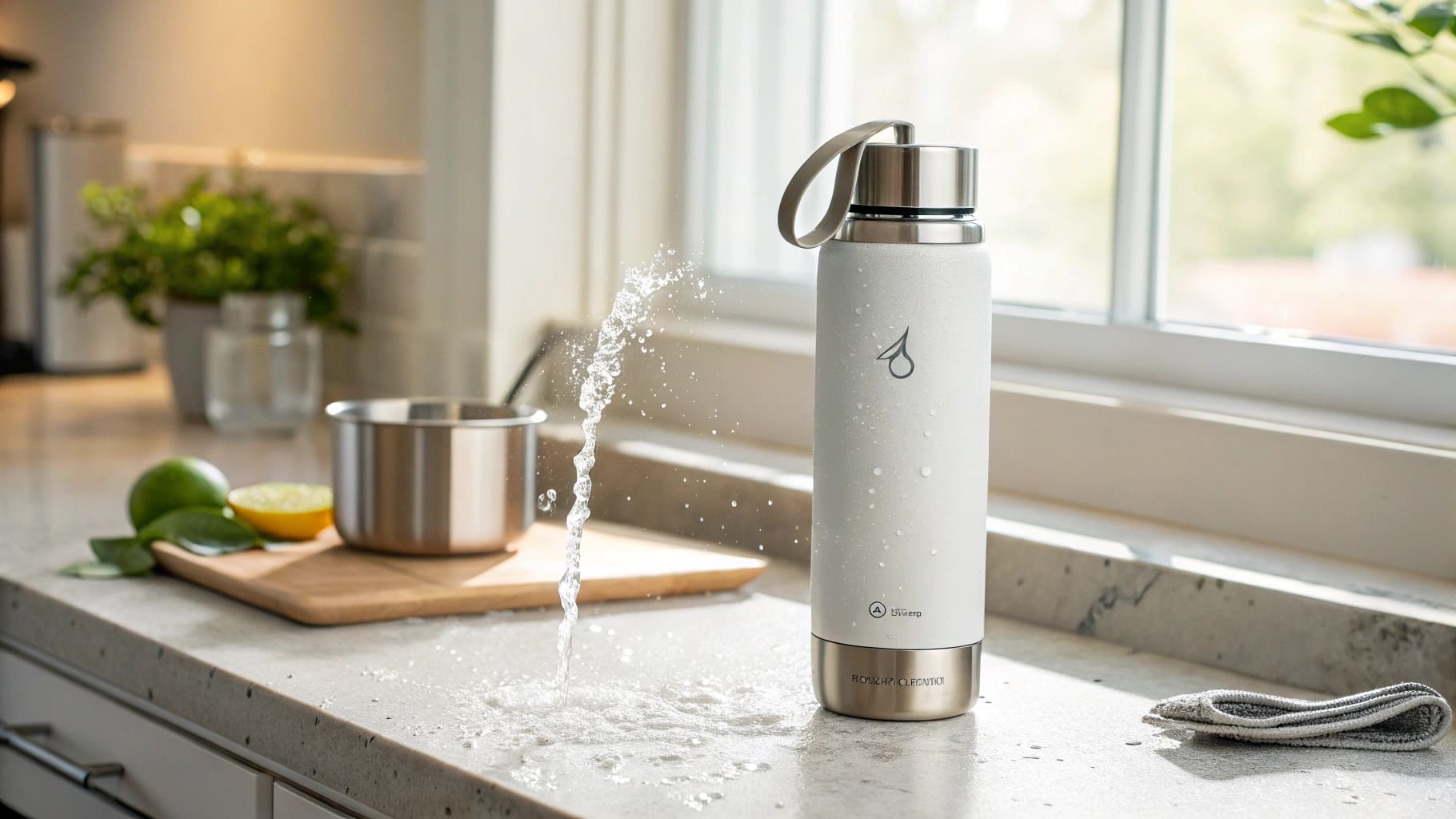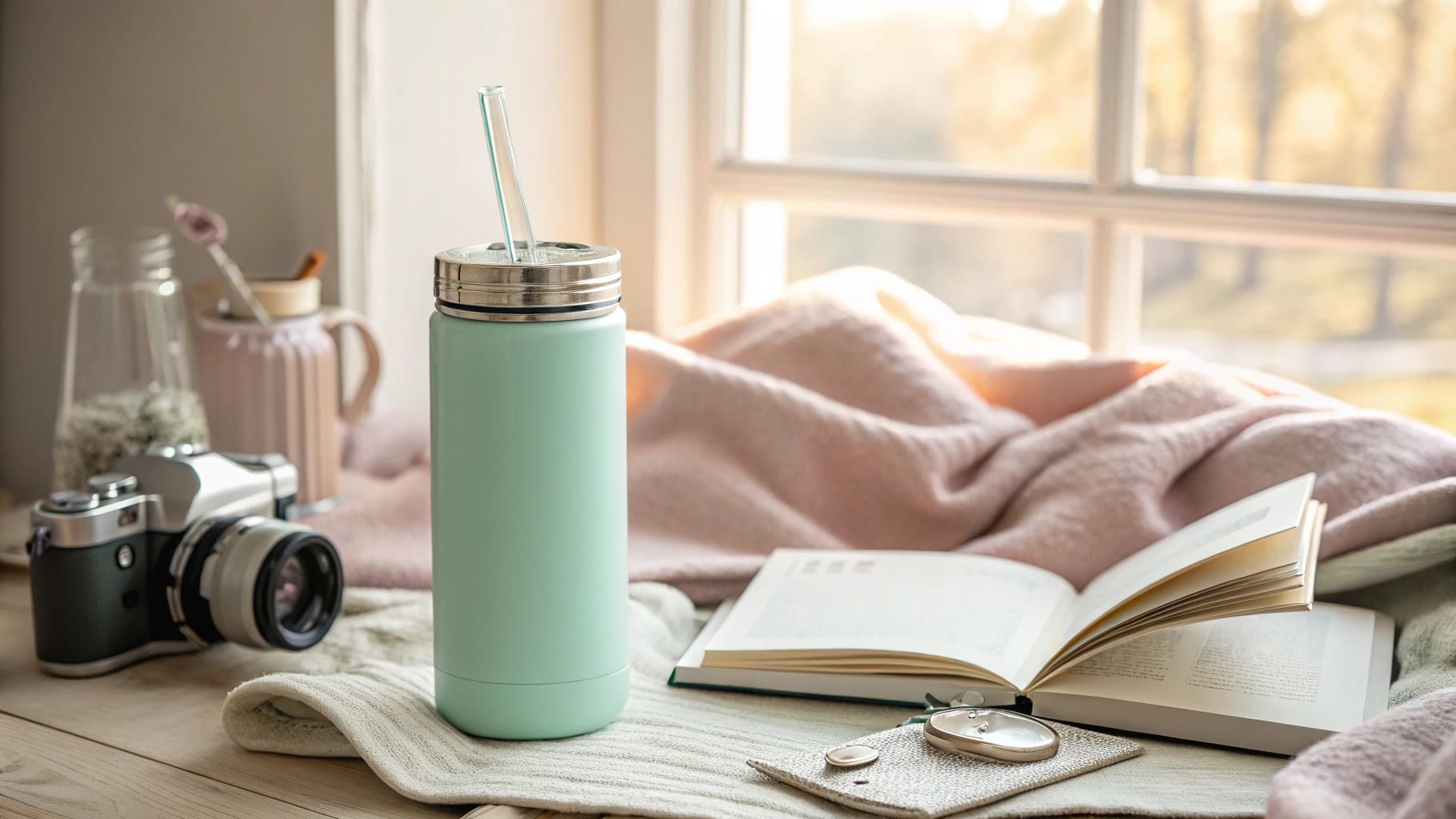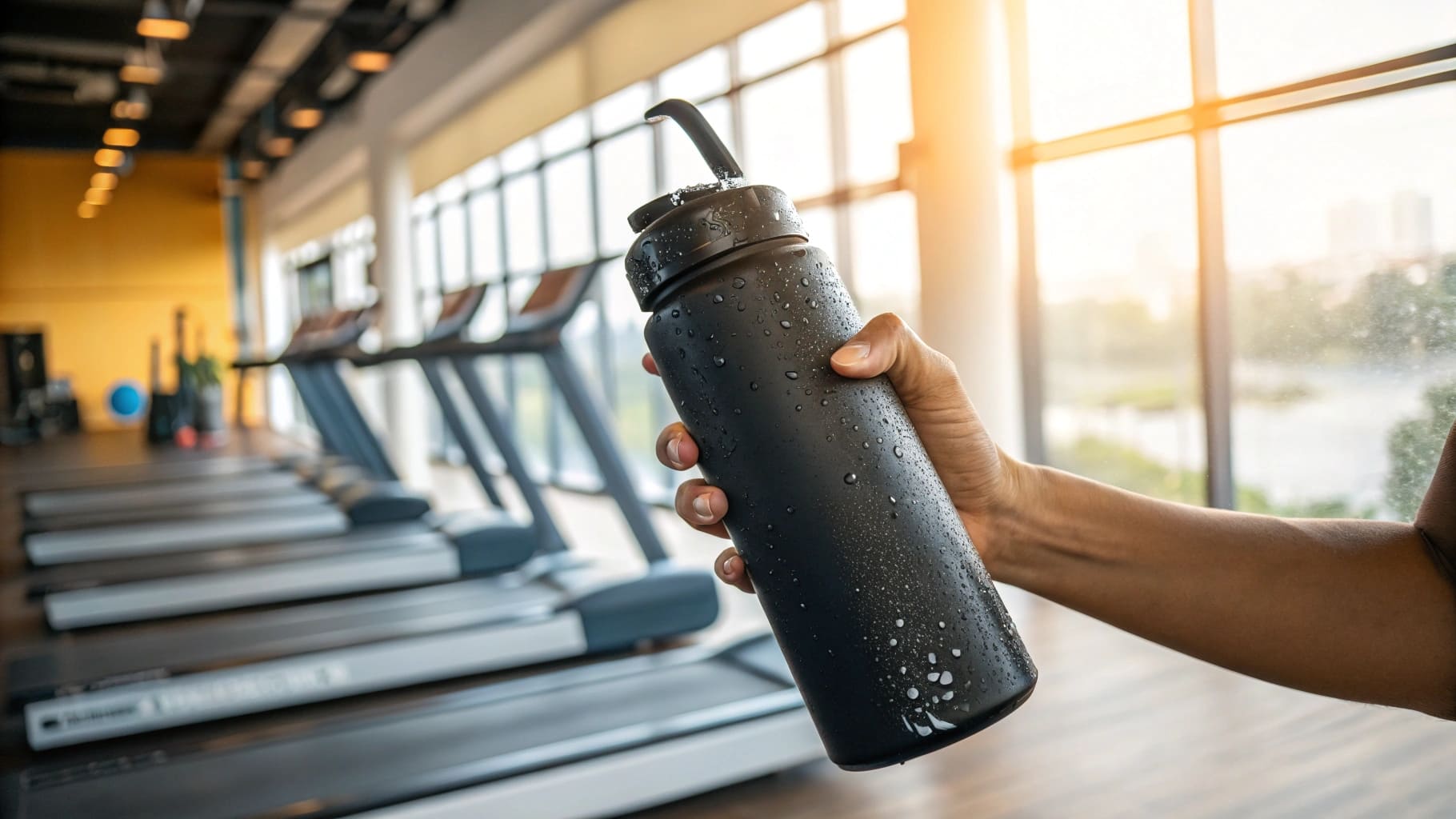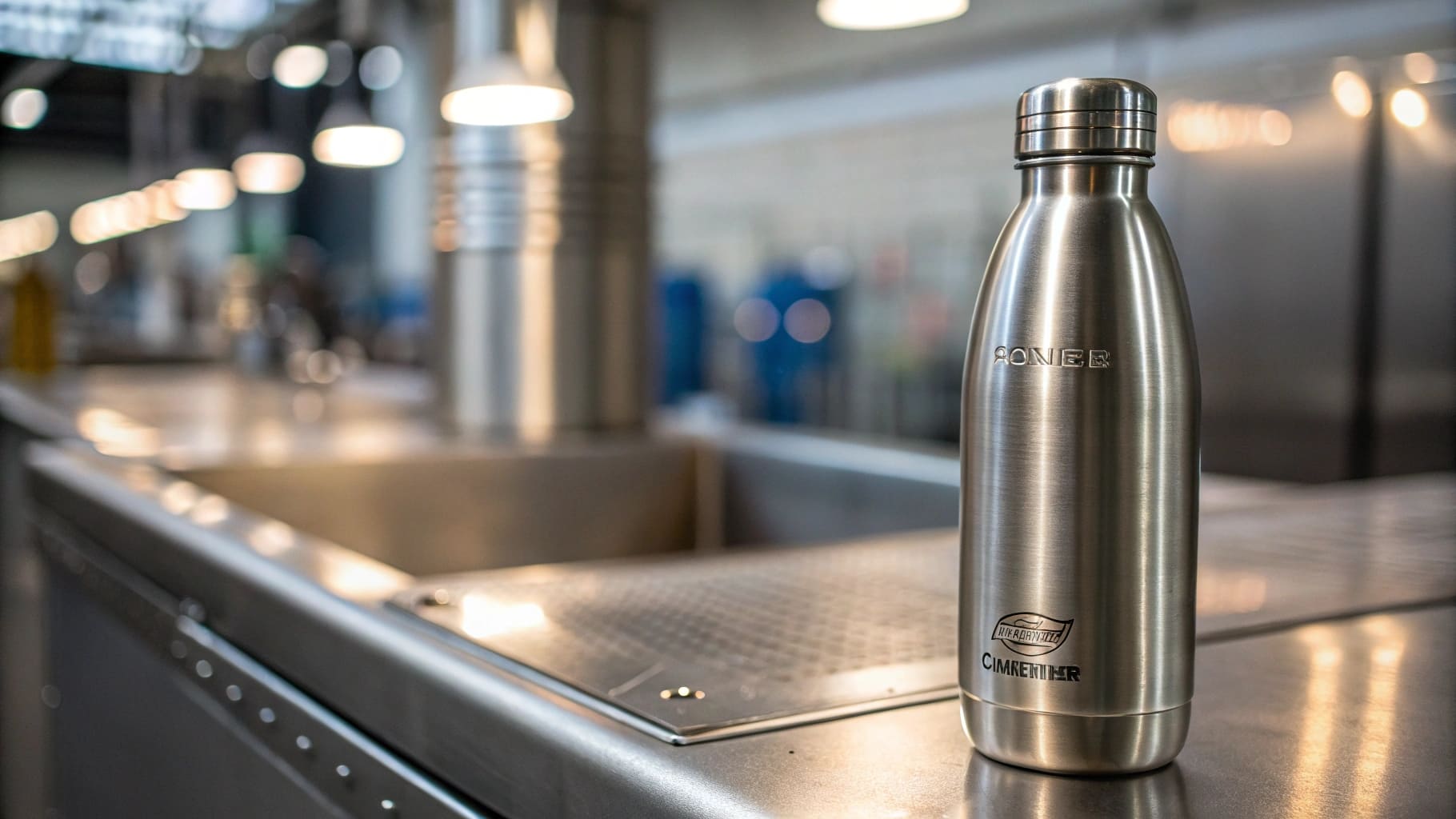Struggling with bottle performance? Unsure about true insulation? This guide helps you understand key design aspects for better products and happier customers.
The best vacuum insulated water bottles use two stainless steel walls with all air removed between them. This design dramatically slows heat transfer, keeping drinks hot or cold for many hours, making them superior to simply "insulated" bottles.

Understanding these details is key for your business. As a B2B buyer, you need to know what makes a great bottle. This knowledge helps you choose products that truly satisfy your customers and build your brand. Let's explore the critical features that make a vacuum insulated bottle stand out, ensuring you can confidently source and market top-quality products. These insights will directly impact your success.
What is the Real Difference Between "Vacuum Insulated" and Just "Insulated"?
Confused by insulation terms? Many bottles claim to be insulated, but not all offer the same performance. Understanding this difference is vital for your sourcing decisions.
"Vacuum insulated" means air is completely removed between two walls, offering superior temperature retention. "Insulated" might just mean a double wall with air or foam, which is less effective.

Diving Deeper into Insulation Technology
When we talk about insulated bottles, it's important to understand the different types. As a procurement officer or a startup boss like Mark Shenng, knowing these differences helps you select products that truly deliver value.
Basic Insulation: The Starting Point
Many products are labeled "insulated." Often, this means they have two walls.
- Air Layer: There might be a layer of air between these walls. Air is a poor conductor of heat, so this offers some insulation.
- Foam Layer: Some bottles might use a thin layer of foam between the walls. This also helps a bit.
However, this type of insulation is not nearly as effective as true vacuum insulation. Heat can still travel quite easily through the air or foam by conduction and convection.
True Vacuum Insulation: The Gold Standard
True vacuum insulation is a more complex process. At Icobottle, this is a standard for our premium products.
- Two Walls: Like other insulated bottles, these have an inner and outer wall, usually made of stainless steel.
- Air Removal: The critical step is that all the air is pumped out from the space between these two walls. This creates a vacuum.
- Sealing: The bottle is then carefully sealed to maintain this vacuum.
Why is a vacuum so effective? Heat transfer occurs mainly through conduction (heat moving through materials) and convection (heat moving through air or liquid). By removing the air, we largely eliminate these two paths for heat to travel. This means hot drinks stay hot much longer, and cold drinks stay cold for extended periods. For instance, a well-made vacuum flask can keep liquids cold for up to 24 hours or hot for up to 12. This performance is a major selling point and justifies a higher value, which is important for Mark who rebrands and sells at a premium in Canada. I always tell my clients, if you want top performance, make sure it’s genuinely vacuum insulated.
How Long Do Vacuum Insulated Bottles Actually Last?
Worried about product lifespan? You want bottles that last, reflecting well on your brand. Poor durability can lead to customer complaints and returns.
A quality vacuum insulated bottle, if the seal remains intact and it's made of good stainless steel, can last for many years. The vacuum itself should last the bottle's lifetime.

Understanding Bottle Longevity and Durability
The lifespan of a vacuum insulated bottle depends on two main things: the integrity of the vacuum seal and the durability of the bottle material itself. As someone like Mark, who is sensitive to quality, these are crucial factors.
The Vacuum Seal's Lifespan
The vacuum insulation is the heart of the bottle's performance.
- Manufacturing Quality: A well-manufactured seal is designed to last for the entire functional life of the bottle. At Icobottle, we focus heavily on this during production.
- Potential for Damage: The main risk to the vacuum seal is physical damage. A very hard drop or a significant dent in the wrong place can compromise the seal. If the seal breaks, the vacuum is lost. The bottle then performs like a regular double-walled (non-vacuum) bottle – it will still offer some insulation, but not the high level it once did.
Material Durability: The Strength of Stainless Steel
The bottle itself, especially when made from high-quality stainless steel, is very robust.
- Common Materials: We typically use food-grade 18/8 stainless steel. This is also known as Type 304 stainless steel. It’s chosen for its excellent corrosion resistance and strength. Some premium options might use Type 316 for even higher corrosion resistance, though 304 is usually perfect for drinkware.
- Resistance to Wear and Tear: Stainless steel naturally resists rust. It doesn't dent easily with normal, everyday use. I remember a story from a client in Europe whose customer accidentally dropped a bottle down a flight of concrete stairs. The bottle got a dent, sure, but the vacuum seal held, and it still kept drinks cold for hours. This kind of resilience is what makes stainless steel ideal.
For B2B buyers, emphasizing robust construction and high-grade stainless steel means offering a product that end-users can rely on for years. This reduces issues like returns and builds a strong reputation for quality, which is vital when you're distributing products under your own brand, as Mark does. Focusing on quality inspection, as Mark does, is key to ensuring this longevity.
How Long Can Water Safely Sit in a Stainless Steel Water Bottle?
Concerned about water safety and taste? Customers often wonder if water goes "bad" in a reusable bottle. This is a valid concern affecting their user experience.
Pure water in a clean, sealed stainless steel bottle can stay fresh for days. Stainless steel is non-porous and doesn't leach, keeping water tasting clean.

Exploring Water Freshness and Bottle Hygiene
When we talk about water "going bad" in a bottle, it's usually not the water itself, especially if it was clean to begin with. The issue is almost always about hygiene and the bottle material. Stainless steel offers significant advantages here, which is great news for your customers.
Why Stainless Steel Keeps Water Fresh
Stainless steel, particularly food-grade types like 18/8 (304), is an excellent material for water bottles.
- Non-Porous Surface: Unlike some plastics, stainless steel is not porous. This means it doesn't absorb flavors or bacteria from the liquids it holds. I often leave water in my own Icobottle overnight, and it tastes just as fresh and clean the next morning.
- No Leaching: Good quality stainless steel doesn't leach chemicals or metallic tastes into the water. This is a major health and taste advantage over some other materials. Mark, being quality-sensitive, would appreciate this assurance for his customers.
- Inert Nature: It’s quite unreactive. So, pure water, if it was sterile or very clean when poured in, can remain drinkable for a very long time – days, even weeks if the bottle is perfectly clean and sealed.
Factors That Can Make Water "Go Bad"
If water does develop an off-taste or become unsafe, it's usually due to contamination:
- Initial Water Quality: If the water put into the bottle wasn't pure to start with.
- Bacteria Introduction: Bacteria from the user's mouth or hands can enter the bottle during use.
- Infrequent Cleaning: If the bottle isn't cleaned regularly, bacteria can multiply. This is where issues like "slime" or bad smells can develop.
For B2B clients like Mark, you can highlight the hygienic benefits of stainless steel. Advising end-users on proper cleaning routines adds value. For example, many of our Icobottle designs feature wide mouths, which make them much easier to clean thoroughly with a brush. This directly addresses consumer health concerns and positions the product as a safe, reusable, and eco-friendly choice. Providing clear care instructions can also help prevent misunderstandings and enhance customer satisfaction.
Conclusion
Mastering vacuum bottle design means focusing on true insulation, durable materials, and hygiene. These elements ensure superior products and customer satisfaction.

